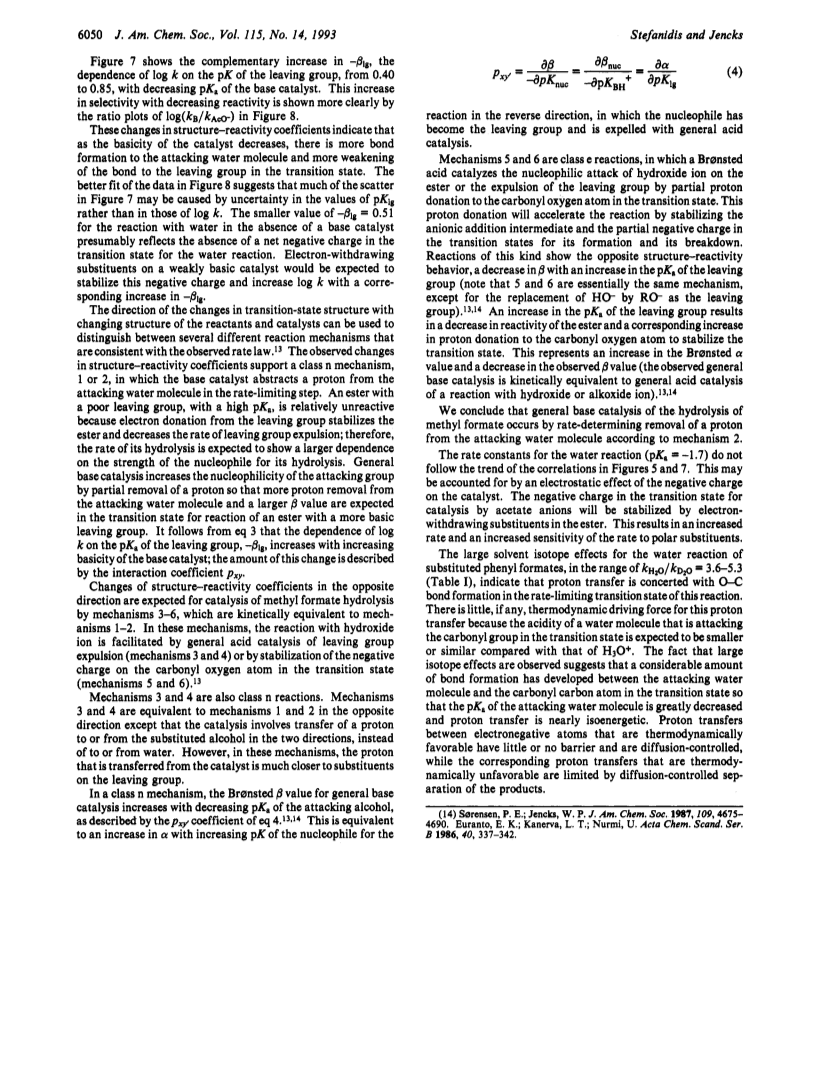
Journal of the American Chemical Society p. 6045 - 6050 (1993)
Update date:2022-08-11
Topics:
 Stefanidis, Dimitrios
Stefanidis, Dimitrios
 Jencks, William P.
Jencks, William P.
The hydrolysis of alkyl formates with leaving groups in the range pKa = 12-16 is catalyzed by substituted acetate anions. There is an increase in the Br?nsted β value for general base catalysis with decreasing pKa of the leaving alcohol and a complementary increase in -β1g with decreasing pKa of the catalyzing base, both of which are consistent with a value of pxy = ?β/-pK1g = ?β1g/-?pKBH ? 0.11. This result supports a class n mechanism of general base catalysis, in which a proton is abstracted from the nucleophilic water molecule by the base catalyst in the transition state; it is not consistent with the kinetically equivalent class e mechanism of electrophilic catalysis by general acids of a reaction with hydroxide ion, by proton donation to the leaving alcohol. Solvent deuterium isotope effects in the range kH2O/kD2O = 3.6-5.3 for the buffer-independent reaction and 2.5-2.8 for catalysis by CHaCOO- support concerted proton transfer and O-C bond formation. The secondary isotope effect for catalysis of the hydrolysis of LCOOMe by acetate ion is kD/kH = 1.05. Both nucleophilic and general base mechanisms of catalysis by acetate anions are observed for the hydrolysis of substituted phenyl formates with leaving groups of pKa = 7.1-10.1. A small value of β = 0.12 for general base catalysis of the hydrolysis of phenyl formate and p-methylphenyl formate represents catalysis of the addition of water by hydrogen bonding of water to the base catalyst. On the other hand, a larger value of β = 0.35 and a decrease in kH2O/kD2O to 1.2 were observed for general base catalysis of the hydrolysis of p-nitrophenyl formate. It is suggested that the increase in β with decreasing pK1g (an apparent "anti-Hammond effect") may be accounted for by a change in mechanism, from catalysis of a stepwise reaction of phenyl and p-methylphenyl formates to concerted general base catalysis of formyl transfer to water for the reaction of p-nitrophenyl formate.
View More





Doi:10.1515/znb-2009-0115
(2009)Doi:10.1016/S0040-4020(01)80500-7
(1992)Doi:10.1039/c4ta06953f
(2015)Doi:10.1016/j.materresbull.2016.04.024
(2016)Doi:10.1016/j.bmc.2007.03.018
(2007)Doi:10.1002/cctc.201500440
(2015)